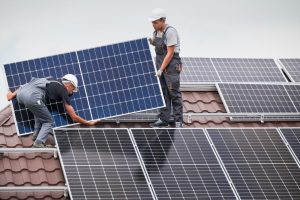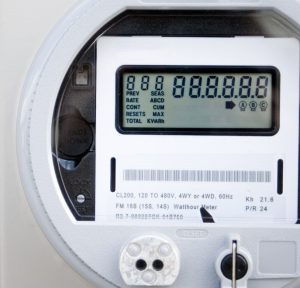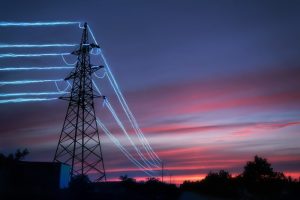Home > Energy Plans > Solar Electricity Plans
Solar Electricity Plans
Looking for a new solar electricity plan? Use Savvy’s 100% free comparison service to compare, select and switch all in one place today.
Author
Savvy Editorial TeamFact checked





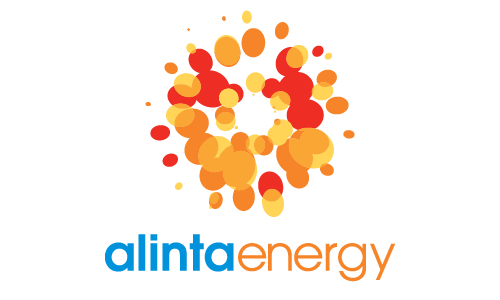







We’ve partnered with Econnex to bring you a range of energy plans to help you compare them.












We’ve partnered with Econnex to bring you a range of energy plans to help you compare them.
















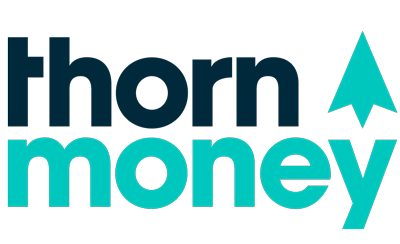





Are you considering installing solar panels or switching to a new solar electricity plan? With rising energy costs and a growing awareness of the importance of sustainable energy, many homeowners are looking to install panels or make the switch to find a better feed-in tariff. Finding the right solar electricity plan can be a time-consuming task, but don’t worry: Savvy is here to help!
Our 100% free comparison service allows you to quickly compare a range of solar energy plans from leading retailers all in one place. With our easy online process, you can instantly see new plans to compare and make the switch online with no fuss, no sales calls and no hassle. Take the first step towards a more sustainable and cost-effective solar plan here through Savvy today!
What are solar electricity plans and how do they work?
A solar electricity plan is an energy plan designed for people who have solar panels installed on their roof. Solar panels work by harnessing the power of the sun and converting it into electricity that can be used to power your home or business. They collect sunlight and convert it into DC (direct current) electricity. An inverter then converts this DC electricity into AC (alternating current) electricity, which can be used to power your home. Any excess electricity generated can be exported back to the national electricity grid, for which you may receive payment (known as a feed-in tariff).
Having solar panels, you'll still be connected to the electricity grid, and will be able to draw from it at night or when your solar panels aren't generating enough power. Your electricity retailer will then bill you based on the net amount of electricity used, minus any feed-in tariff payment you’re due for the electricity your panels have generated.
What are the benefits of having a solar electricity plan?
There are many benefits to having a solar energy system, including the following:
- Firstly, you can save money on your electricity bills by generating your own power, so you use less from the national grid
- You may be able to earn money by exporting excess electricity back to the grid
- You may be able to use your feed-in tariff to reduce your gas bills too, by linking your energy plans together with one provider
- It's an environmentally friendly option, as you're using clean energy to power your home
- It can add value to your property, as solar panels are seen as a desirable feature by many homebuyers
What is a solar feed-in tariff?
A solar feed-in tariff is a payment made to households or businesses which generate excess electricity from their solar panels and export it back to the national grid. The rate of the tariff depends on your electricity retailer and can vary depending on factors such as location and time of day. The tariff is expressed in cents per kilowatt-hour (c/kWh).
Not all feed-in tariffs are equal. Some retailers may offer one tariff for the first amount of electricity fed back into the grid, and a lesser amount once a cap has been reached. For example, under one solar electricity plan in South Australia, the feed-in tariff is 12c/kWh for the first 14 kWh generated and 5c/kWh thereafter.
However, it’s important to look at both sides of the energy equation when choosing a solar electricity plan, because not only do you generate electricity, but you’ll use it too, such as at night or when the sun isn’t shining.
Therefore, the amount you’re charged for the electricity you use from the grid is just as important as how much you are paid for the electricity you generate. A solar energy plan with a high feed-in tariff may not offer you greater benefits overall if you’re also charged higher prices for the electricity you use from the grid. As such, the best solar energy plan for you is likely to be one which has a high feed-in tariff but also low usage and supply costs.
What else should I look for when I compare solar plans?
When using Savvy’s free online comparison service, these are the other elements you should look at when comparing solar plans side-by-side:
- Reference price and percentage: the reference price is a benchmark price for electricity set by the Australian Government. It’s based on the average electricity use in your area. Electricity retailers must tell consumers how their advertised price differs from the reference price, which is expressed as a percentage figure. A bigger percentage usually means you’re getting a better deal than average. For example, 6% less than reference price is better than 4% less.
- Estimated annual cost: this is an estimated cost for electricity plans in your area based on the average price of electricity. However, this won't be the actual price you pay, as it’ll ultimately depend on how much power you use. Average costs are used as examples so consumers can compare apples with apples.
- Usage rate: this is the amount you're charged for the electricity you use from the grid. It may be charged at one c/kWh rate for the first block of power you use and a different rate for subsequent blocks. Some retailers have multiple tariff rates, including time of use tariffs, controlled load tariffs and high demand tariffs. For example, a time of use tariff means you pay more or less for your power depending on the time of day and/or day of the week. Peak periods of usage mean higher charges and low-demand or ‘shoulder’ periods may be cheaper.
- Daily supply charge: this is the cost to be connected to the grid and is charged in cents per day. This isn’t impacted by your usage.
- Ongoing or fixed period contract: some contracts lock you in for a set period (such as 12 months), while others are ongoing.
- Discounts: check what discounts may apply and for how long they may last. For example, some retailers offer ongoing discounts if you bundle your electricity and gas plans together or if you pay on time (known as a pay-on-time discount).
- Green energy options: some plans also offer green energy options such as carbon-neutral plans, carbon offset options and green power options. These encourage retailers to buy renewable energy generated by wind, solar or biofuels, and help reduce your carbon footprint on the planet.
- Fees: these can be charged in addition to your supply and usage for a variety of reasons, such as:
- connection
- disconnection
- early exit from a fixed plan
- late payment
- providing paper bills
What’s the process for making the switch through Savvy?
Comparing and switching solar electricity plans has never been easier with Savvy’s free comparison tool. You can compare, choose and switch all in one place online. The process is as simple as 1, 2 3.
Complete a short online form through us
To switch to a new energy provider, you'll need to provide some details about the type of plan you want and your current feed-in tariffs (if you have solar panels). You should have a recent electricity bill handy, as you'll also need to provide details about your current usage and the type of electricity meter you have.
Compare offers available in your area
Once you provide this information, you’ll be shown a range of some of the best solar plans to compare online. You'll be able to see the latest solar electricity plans available in your area, and how much you could potentially save. When you find a plan you feel comfortable with, you can select that provider immediately online and have the rest taken care of for you.
Choose your plan and make the switch
If you decide to switch, your new energy provider will contact you to confirm your new plan and get your contract in place. Your former supplier will arrange for a final meter reading and issue a final bill. The switch should only take two to three days, and you won't be left without power during that time.
Types of energy plan
Every home needs an electricity connection. From powering your fridge to your television, it's important to know the differences between electricity plans before you buy.
Who doesn't love a warm, cozy bedroom in winter or a hot shower on a cold morning? Natural gas helps heat things up in your home, so getting the right gas plan is crucial.
Solar panels are becoming increasingly common as Australians make a sustainable switch. Your connection to the grid is still important for when the sun isn't out, though.
Energy providers are now providing plans to Australians who want to make use of more environmentally friendly sources. These are often known as green energy plans.
It isn't all about homes, though. Electricity and gas are vital for small, medium and large businesses around Australia, so some retailers offer specialist plans to match.
Why compare energy plans with Savvy?
100% free to use
You won’t need to pay a cent to compare a variety of energy plans online through Savvy, as it’s 100% free.
Simple online quotes
By filling out your form and providing a recent energy bill, you can have all the facts and figures worked out for you.
Trusted energy providers to compare
When you fill out your quote, you’ll be able to consider offers from some of the leading energy providers in Australia.
Frequently asked questions about solar electricity plans
Some energy providers (but not all) offer a solar and gas bundle, where customers can transfer the credit from their solar generation to pay a portion of their gas bill. They may also offer a discounted rate on gas usage when combined with a solar energy plan. By consolidating your gas and electricity energy usage into one account, you may be able to get discounts on both forms of power, such as 4% off your overall electricity bill and 6% off your gas bill if you have a combined account.
Yes – it isn’t possible to have electricity generation and consumption with separate providers unless you have two electricity meters installed especially for this purpose, which most houses in Australia don’t have. Your solar system connects to a smart energy meter which calculates all the electricity your solar panels produce. If you don't use the solar energy when your solar panels produce it, the energy will return to the electrical grid through the meter. In effect, it may turn your electricity meter ‘backwards’, giving you a credit, which is why you need a special smart meter when you have a solar system installed.
If you have solar panels installed, you'll need a special meter installed to measure the amount of electricity generated and exported. Your electricity retailer or installer will help you arrange this when you first get your solar panels installed.
Yes – solar panels require some maintenance at least once a year to ensure they continue to operate efficiently. This can include cleaning the panels to remove any leaves, debris or dirt that may accumulate on them over time.
The amount of electricity generated by solar panels will depend on several factors, including the size and number of the panels, the efficiency of the panels, their orientation and the amount of sunlight available. Some systems generate sufficient just to power a home when the sun is shining, whereas others will generate more than the household uses during daylight hours.
Helpful energy guides
Disclaimer:
Savvy is partnered with Econnex Comparison (CIMET Sales Pty Ltd, ABN 72 620 395 726) to provide readers with a variety of energy plans to compare. We do not compare all retailers in the market, or all plans offered by all retailers. Savvy earns a commission from Econnex each time a customer buys an energy plan via our website. We don’t arrange for products to be purchased directly, as all purchases are conducted via Econnex.
Any advice presented above is general in nature and doesn’t consider your personal or business objectives, needs or finances. It’s always important to consider whether advice is suitable for you before purchasing an energy plan. For further information on the variety of energy plans compared by Econnex, or how their business works, you can visit their website.




